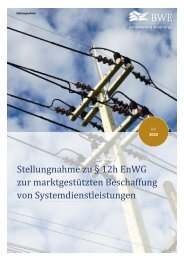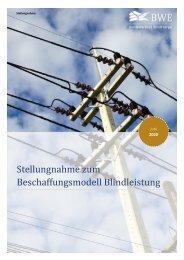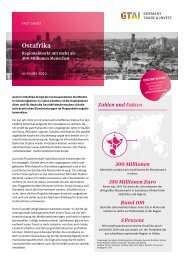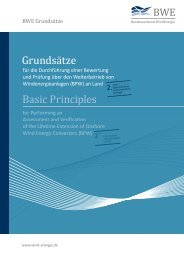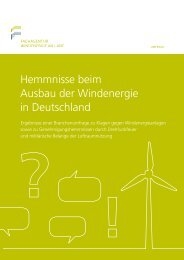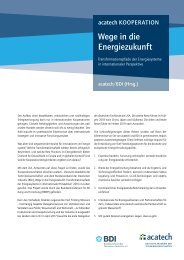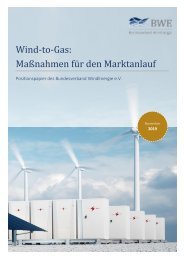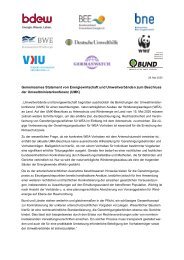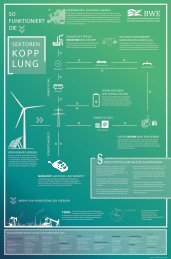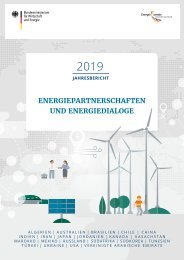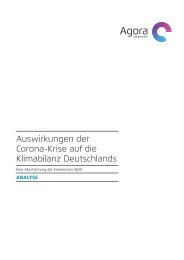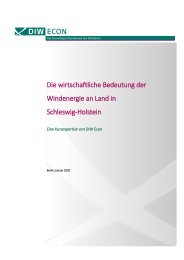Making transition work - Wind Europe
This report provides clear elements on how to make transition work in the coming decade. It provides recommendations to policymakers on how to facilitate a swift transformation of the energy system and considers the policies that will make Europe the best choice for those investing in renewables.
This report provides clear elements on how to make transition work in the coming decade. It provides recommendations to policymakers on how to facilitate a swift transformation of the energy system and considers the policies that will make Europe the best choice for those investing in renewables.
You also want an ePaper? Increase the reach of your titles
YUMPU automatically turns print PDFs into web optimized ePapers that Google loves.
EXECUTIVE<br />
SUMMARY<br />
Energy markets are in <strong>transition</strong> structurally, geographically and in terms of regulation. These changes represent<br />
both challenges and opportunities for wind energy. <strong>Making</strong> the energy <strong>transition</strong> <strong>work</strong> to the benefit of citizens,<br />
businesses and governments requires actions today from policy makers and industry.<br />
The direction is clear: 80% - 95% decarbonisation of the <strong>Europe</strong>an economy by 2050. However, with a modest 27%<br />
renewable energy target in final energy demand by 2030, the EU is postponing decisive actions to the post-2030 period.<br />
This report provides clear elements on how to make <strong>transition</strong> <strong>work</strong> in the coming decade. It provides recommendations<br />
to policymakers on how to facilitate a swift transformation of the energy system and considers the policies that will make<br />
<strong>Europe</strong> the best choice for those investing in renewables.<br />
The report outlines four megatrends defining<br />
the evolution of the <strong>Europe</strong>an power system<br />
and wind energy markets:<br />
1. Transition from fossil fuels to renewables.<br />
Renewable energy accounted for 77% of all new<br />
EU power installations in 2015, while conventional<br />
power sources such as fuel oil and coal continue to<br />
decommission more capacity than they install. 29%<br />
of all electricity generated in <strong>Europe</strong> in 2015 came<br />
from renewables, up from 15% in 2005.<br />
2. Abrupt and in some cases retroactive<br />
regulatory changes alter energy markets<br />
in <strong>Europe</strong> to the detriment of the wind energy<br />
industry. Until 2013, wind turbines were being<br />
installed in almost all countries of the <strong>Europe</strong>an<br />
Union. Since then, new installations have declined<br />
in well-established wind energy markets such as<br />
Italy, Portugal and Spain. The EU frame<strong>work</strong> has<br />
struggled to address these policy changes at national<br />
level. Particularly, a disordered <strong>transition</strong> of support<br />
mechanisms in some countries halted investments<br />
in wind energy as the EU adopted a very prescriptive<br />
approach from feed-in-tariffs to tenders.<br />
3. Emerging and developed economies outside<br />
<strong>Europe</strong> are seizing the economic and social benefits<br />
of wind power and have started deploying it at<br />
industrial scale. More than 70 countries highlighted<br />
wind power in their commitments prior to the Paris<br />
Climate Conference in 2015. An unstable regulatory<br />
frame<strong>work</strong> in <strong>Europe</strong> and stronger political<br />
commitments for renewables outside of <strong>Europe</strong> are<br />
moving wind energy investments away from the old<br />
continent.<br />
4. Falling costs of renewables have made them<br />
one of the most competitive options for new power<br />
generation. Onshore wind and solar PV are today<br />
one the most affordable sources for electricity in<br />
many parts of the world and costs reductions are<br />
expected to continue. Onshore wind costs could fall<br />
26% by 2025. Offshore wind energy could reach €80/<br />
MWh by 2025 in <strong>Europe</strong> and further cost reductions<br />
could be possible with the right pipeline of projects.<br />
6 <strong>Making</strong> <strong>transition</strong> <strong>work</strong><br />
<strong>Wind</strong><strong>Europe</strong>



